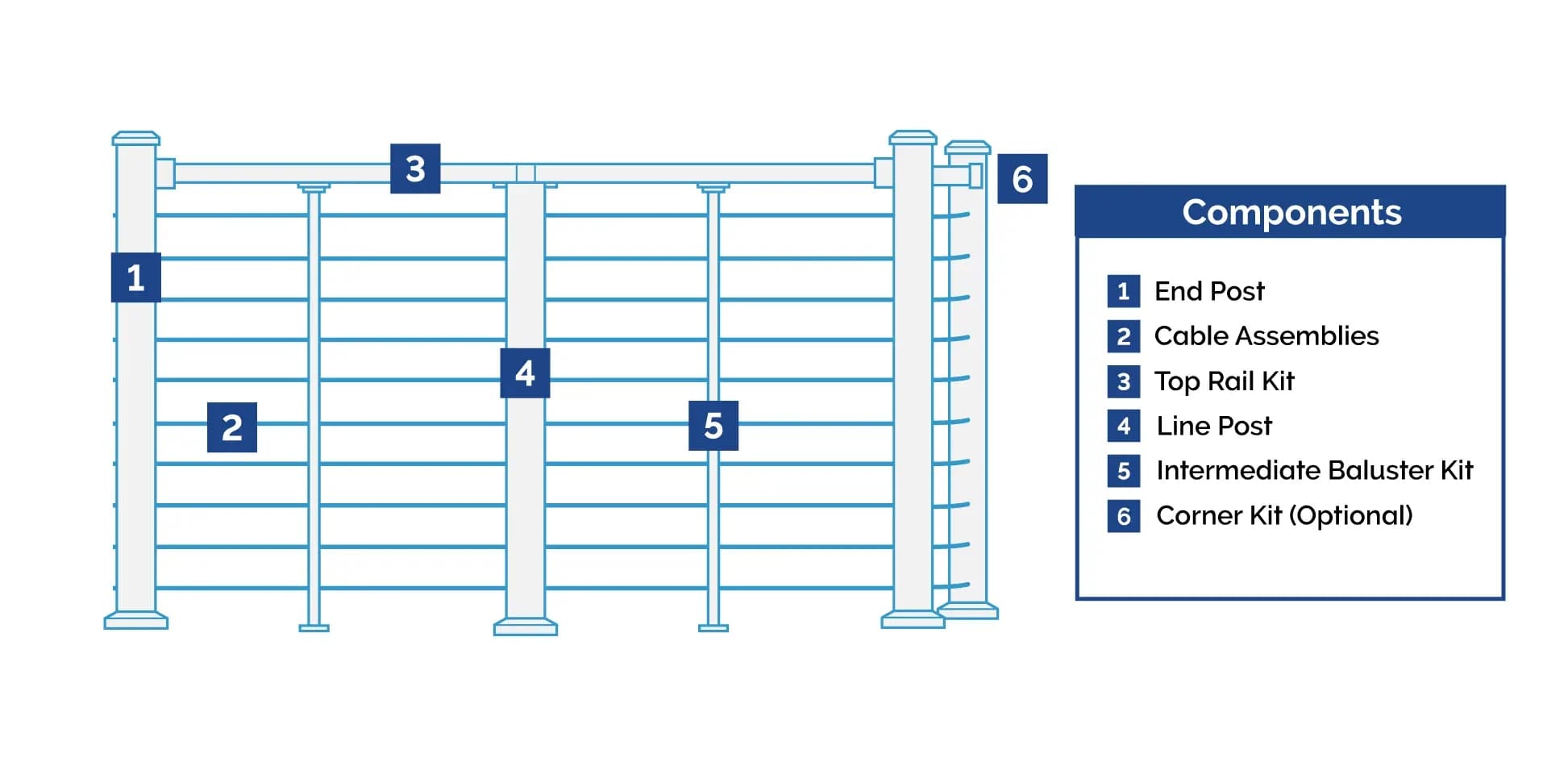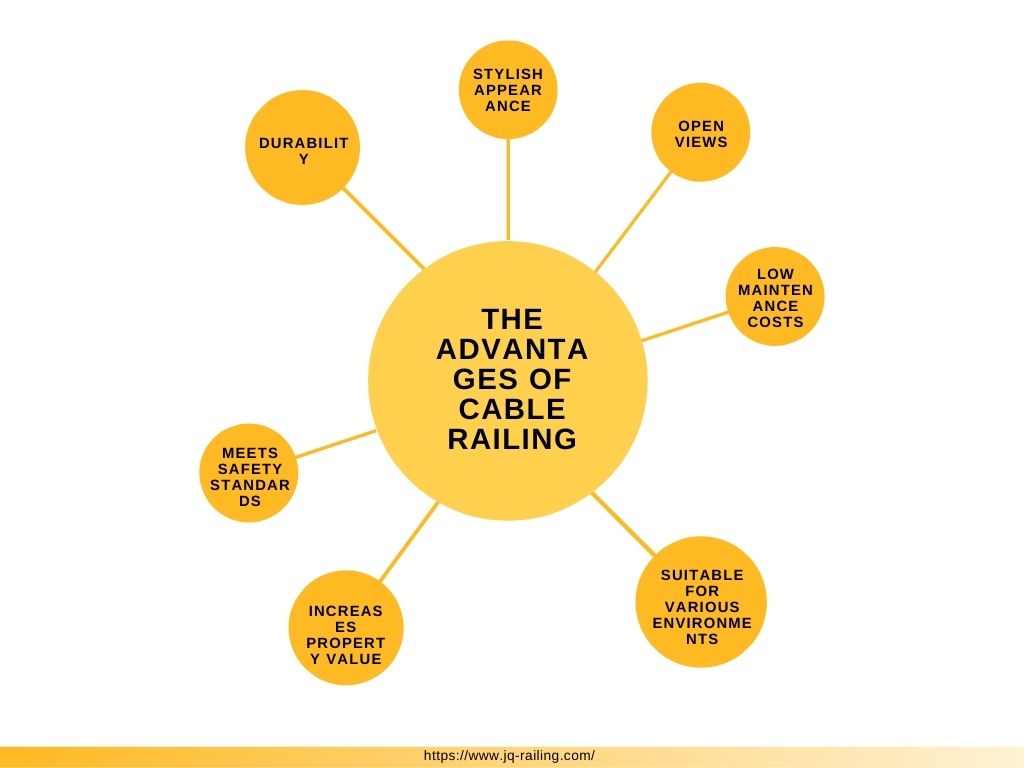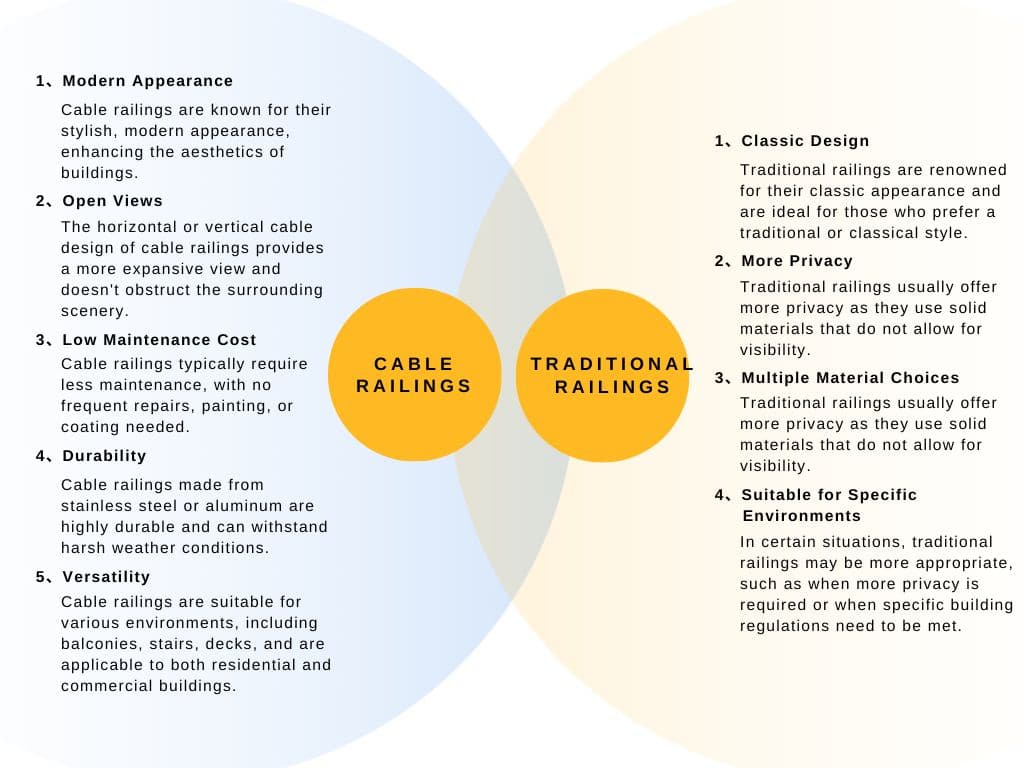In this ever-evolving world, we constantly encounter innovative solutions that not only enhance the visual appeal of our surroundings but also offer practical advantages. Cable railings are a prime example of this innovation, known for their contemporary aesthetics and robust structure. This article aims to provide a comprehensive exploration of cable railings, delving into their definition, material choices, installation process, benefits, and more, to give you a comprehensive understanding of this stylish and practical architectural feature.
Introduction to Cable Railing Systems
Cable railing, also known as wire railing or steel wire rope railing, is a type of guardrail system that utilizes horizontal or vertical cables to create a barrier while providing an unobstructed view of the environment. This modern and minimalist design is widely used in residential and commercial settings, offering a stylish and contemporary appearance.

Materials Used in Cable Railing Systems
A wide variety of materials can be used for cable railing systems, with common materials including:
- Metals: Metals are among the most commonly used materials for manufacturing cable railings. Common metals include aluminum, steel, iron, and stainless steel. These metals offer good strength and weather resistance, suitable for various environments, with stainless steel being particularly resistant to corrosion.
- Plastic: Plastic cable railings are typically made from high-strength engineering plastics such as polyvinyl chloride (PVC) or polypropylene (PP). They are lightweight, corrosion-resistant, and easy to maintain, making them suitable for low-load and lightweight applications.
- Wood: Wood cable railings are often made from hardwood or softwood, such as oak, pine, or redwood. Wood railings provide a natural and aesthetically pleasing look, suitable for both indoor and outdoor environments. However, wood requires regular maintenance to prevent rot and fading.
- Glass: Glass railings are supported by steel or aluminum frames and typically use tempered glass or laminated glass as the railing panels. This type of railing is suitable for locations requiring transparency and a modern appearance, such as stairs, balconies, and terraces.
- Composite Materials: Some cable railing systems use a combination of materials, such as metal frames and glass panels, to leverage the advantages of multiple materials for enhanced performance and aesthetics.

You can choose different types of cable railing materials based on your specific design requirements, budget, and environmental conditions, with each material having its unique characteristics and advantages.
Installation Process for Cable Railing Systems
Tools and Equipment
To install cable railing, you’ll need some tools, including a cable cutter, tensioning hardware, and drill bits.Step-by-Step Guide
- Measure and mark the railing area.
- Install corner and end posts.
- Thread the cables through the posts.
- Tension the cables.
- Trim any excess cable.
- Check the tension and safety of the railing.
While cable railing installation can be a DIY project, it’s important to follow proper guidelines and have the necessary tools and skills. For more complex projects, consider professional installation.
Benefits of Cable Railing Systems
Cable railing systems offer numerous advantages, making them a popular choice in modern architecture and design. Here are some of their main benefits:
- Stylish Appearance: Cable railings are renowned for their clean and stylish look, enhancing the aesthetics of any building and giving spaces a modern touch.
- Open Views: Compared to traditional railings, cable railings provide a wider and unobstructed view. Their horizontal or vertical cable design allows you to fully appreciate the surrounding scenery, making them an ideal choice for picturesque locations.
- Low Maintenance Costs: Cable railing systems typically require less maintenance. They don’t need frequent painting or coating, and the cables are easy to clean.
- Durability: Cable railings made of stainless steel or aluminum are generally highly durable, able to withstand harsh weather conditions and other natural elements.
- Suitable for Various Environments: Cable railings can be installed in various settings, including balconies, stairs, decks, and more. They are suitable for both residential and commercial buildings.
- Safety Compliance: Cable railings are designed to meet safety standards, with the cable spacing usually small enough to prevent children or pets from slipping through.
- Increased Property Value: The modern look and practical functionality of cable railings can enhance the value of properties, making them more appealing to potential buyers.

Cable Railing Systems vs. Traditional Railings
Cable railing systems have many unique features and advantages compared to traditional railings. Here’s a comparison between them:
Cable Railing Systems:
- Modern Appearance: Cable railings are known for their contemporary and modern appearance, adding a touch of style to buildings.
- Open Views: The horizontal or vertical cable design of cable railings offers a broader view without obstructing the surroundings.
- Low Maintenance Costs: Cable railing systems typically require less maintenance, without the need for frequent repairs, painting, or coatings.
- Durability: Cable railings made of stainless steel or aluminum are highly durable, capable of withstanding extreme weather conditions.
- Suitable for Various Environments: Cable railings are suitable for balconies, stairs, decks, and various settings, both residential and commercial.
Traditional Railings:
- Classic Design: Traditional railings are known for their classic appearance, ideal for those seeking a traditional and classical style.
- More Privacy: Traditional railings usually provide more privacy because they use solid materials that are not see-through.
- Multiple Material Choices: Traditional railings can be made from various materials, including wood, metal, and plastic, to meet different design requirements.
- Suitable for Specific Environments: In certain situations, traditional railings may be more suitable, such as when more privacy is required or when specific building regulations must be met.

In conclusion, cable railings offer a modern and practical alternative to traditional railing systems. They find extensive use in various applications, providing safety and aesthetic benefits. Whether you choose to install them yourself or hire professionals, cable railings can transform your space into a contemporary masterpiece.
The cable railing industry is continuously evolving, and exciting trends and innovations lie ahead. The application of new materials will improve railing strength and durability while reducing maintenance costs. The development of automation and smart technologies will enhance railing performance and safety, offering more control options. Digital design and simulation will help designers better meet customer needs and provide greater design flexibility.
Furthermore, sustainability and eco-friendliness have become a major focus in the cable railing industry. The use of environmentally friendly materials and production methods, as well as reducing resource waste, are the directions of future development. This will help reduce the ecological footprint, improve sustainability, and align with current environmental trends.
However, when selecting and installing cable railings, attention should still be paid to common issues, such as safety compliance, material choices, maintenance requirements, cost factors, and user experience. Understanding these issues and collaborating with professional cable railing suppliers will ensure the successful implementation of your project.
Common Questions
Q: Is cable railing safe for families with children and pets?
A: The design of cable railing systems takes safety into consideration, typically featuring tightly spaced cables to prevent children or pets from slipping through.
Q: What maintenance is required for cable railing?
A: Cable railings require occasional cleaning to remove dirt and debris. Mild cleaning agents and a soft brush are usually sufficient.
Q: Can cable railing withstand harsh weather conditions?
A: Yes, cable railings are known for their durability and ability to withstand extreme weather conditions, especially when made of materials like stainless steel or aluminum.
Q: Does cable railing obstruct the view from a deck or balcony?
A: No, cable railing provides an unobstructed view, making it an ideal choice for scenic locations.
Q: Is cable railing installation suitable for DIY?
A: Cable railing installation can be a DIY project, but it is essential to follow proper guidelines and have the necessary tools and skills. For complex projects, professional installation should be considered.

